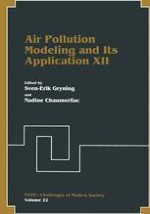1998 | OriginalPaper | Chapter
Biomass Burning: Local and Regional Redistribution
Authors : J. Edy, S. Cautenet
Published in: Air Pollution Modeling and Its Application XII
Publisher: Springer US
Included in: Professional Book Archive
Activate our intelligent search to find suitable subject content or patents.
Select sections of text to find matching patents with Artificial Intelligence. powered by
Select sections of text to find additional relevant content using AI-assisted search. powered by
Tropical biomass biogeochemistry is one of the most poorly understood on the earth. The tropics account for about 60% of the global annual net primary productivity and this enormous productivity is characterized by many chemical species which are emitted as gas or aerosols and can modify the global radiative balance. Biomass burning is associated with agricultural activity in the savannah, the destruction of tropical forests and the use of wood as “fuel”. They release into the atmosphere large quantities of CO2 and a variety of chemically active species such as CO, NOx, N2O, CH4, and others expressed in (1, 2). The biomass annually burned in the world represents about 1.8 to 4.7 GT. of carbon (3), savannah fires being the dominant component with about 1-1.6 GT. of carbon burned. Savannah fires alone contribute approximately 10% of the global CO emissions. This phenomenon is especially important in Africa. The contribution of African savannah fires to global emission of trace gas and aerosols has been estimated by (4). During dry season, pollution events are similar in magnitude to those observed in industrialised regions as observed in high levels of acid precipitation that were reported in these region (5).
